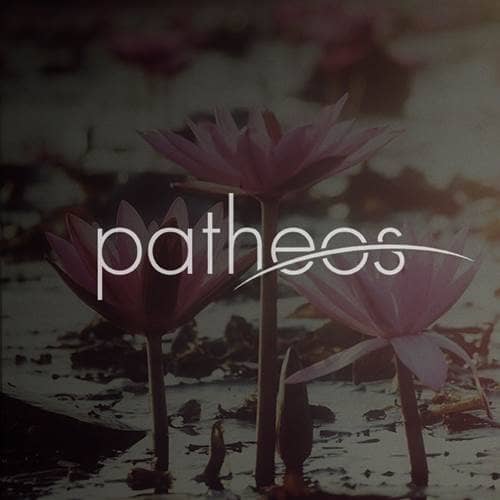- Trending:
- Pope Leo Xiv
- |
- Israel
- |
- Trump
- |
- Social Justice
- |
- Peace
- |
- Love

RELIGION LIBRARY
New Age
Schisms and Sects
Though the New Age generally eschews hierarchy or organizations, several distinct subcultures within the New Age have formed around what one might call New Age new religious movements (NRMs). Since these NRMs uphold much stronger insider/outsider position than other parts of the New Age, such religious movements possess a core membership of extremely devoted members as well as a peripheral membership that combines their association with the specific NRM with a broader New Age identity. Because of their strong organizational approach and need to fund the organizational hierarchy, such New Age NRMs also tend to ask more time, money, and energy from their followers than do most other New Age professionals, such as channelers, holistic healers, or astrologers. Though one can find hundreds of such groups throughout the world, a few merit special consideration because they represent major schools of thought within the New Age.
The New Age sect associated with professional channeler J.Z. Knight, Ramtha's School of Enlightenment, represents one of the most obvious examples of New Age NRMs. Formerly a self-described suburban housewife, in 1977 Knight experienced the first of her channeled experience with Ramtha. An ancient extraterrestrial warrior, Ramtha brought a message of self-empowerment and self-development, alongside apocalyptic predictions that humanity appears to be on a path toward self-destruction. Knight transformed her initial channeling experience into a world-wide empire of training seminars, self-help books, one-on-one counseling sessions, and alternative healing approaches. Ramtha's disciples dedicate themselves to spreading their spiritual master's teachings, most notably through the 2004 film What the Bleep Do We Know!?, a movie that combined the basic tenets of the New Age movement with metaphysical interpretations of contemporary quantum physics. Though Ramtha's School of Enlightenment dwarfs other organized channeling NRMs in size, numerous other such religions exist. Groups have formed around the being Seth, channeled by Jane Roberts, as well the more diffuse subculture centered on Schucman's channeled A Course in Miracles.
UFO religions compromise another distinct subset of the New Age movement. Such movements exhibit great diversity, but all look to unidentified flying objects and extraterrestrial life as sources for such New Age goals as self- and social-development. Numerous UFO NRMs exist or once existed, including the Raelian religion, Heaven's Gate, Aetherius Society, and Unarius Academy of Science. While most New Age practitioners highly value alternative scientific systems, UFO NRMs place technology and science at the absolute center of their missions. Each of these groups not only declared itself scientific, but also developed a New Age religion that redefined traditional religious concepts in what they regarded as the more scientific language of "ufology." For example, members of the Raelian movement look to the biblical description of resurrection as a form of cloning. Like other New Agers, adherents of UFO traditions look to transform themselves and society through alternatives to the Christian and modern mainstream. Interestingly, proponents of UFO religions tend to reject wider New Age practices, which they consider unscientific or against the spirit of the modern world. Still, the UFO religions generally practice some form of channeling, and look to self-development and world-transformation as a final goal.
The Church Universal and Triumphant (CUT) represents a special case within the category of New Age NRMs. CUT in fact predates the current New Age movement, having been founded in 1958 as the Summit Lighthouse. The group drew from the metaphysical traditions that predated the New Age, most notably New Thought. However, with the emergence of the New Age, CUT redefined itself as a New Age church. Its founder, Mark Prophet, and subsequent leader, Elizabeth Clare Prophet, channeled messages from the Ascended Masters, great spiritual leaders such as Christ, the Buddha, and Krishna. Over time these messages became more apocalyptic, and in the 1990s CUT began preparing for a coming nuclear war by sequestering its members in remote Montana, along with survival gear. The prophesied apocalypse did not occur, and with time CUT has returned to a more positive outlook on the world's future.
Another distinct split within the New Age movement concerns particular schools of healing techniques. In an attempt to define themselves as fully scientific and secular, during the 1980s and 1990s many New Age healers and traditions have distanced themselves from the New Age movement. Reiki (which comes from a Japanese NRM) serves as a case in point. Reiki practitioners believe that by laying their hands on a sick person they can adjust their subject's energy and restore a more potent balance of energy. In practice, Reiki also possesses numerous New Age qualities, such as past-life regression practices, a philosophy of human potential, and a vision of world transformation. However, in an attempt to practice their healing art in hospitals, schools, and secular institutions, Reiki has moved away from its identity as New Age movement. Traditional herbalists have made a similar move, as did the broader homeopathic medical community. However, such movements' theologies remain firmly rooted in the New Age, draw patients from the New Age community, and spread by periodicals and books published under the rubric of New Age.
Study Questions:
1. How do New Religious Movements fit within the New Age identity?
2. What is Ramtha’s School of Enlightenment? What does it teach?
3. How do UFOs fit into the New Age Movement?
4. What is Reike? How did it separate itself from the New Age movement?










